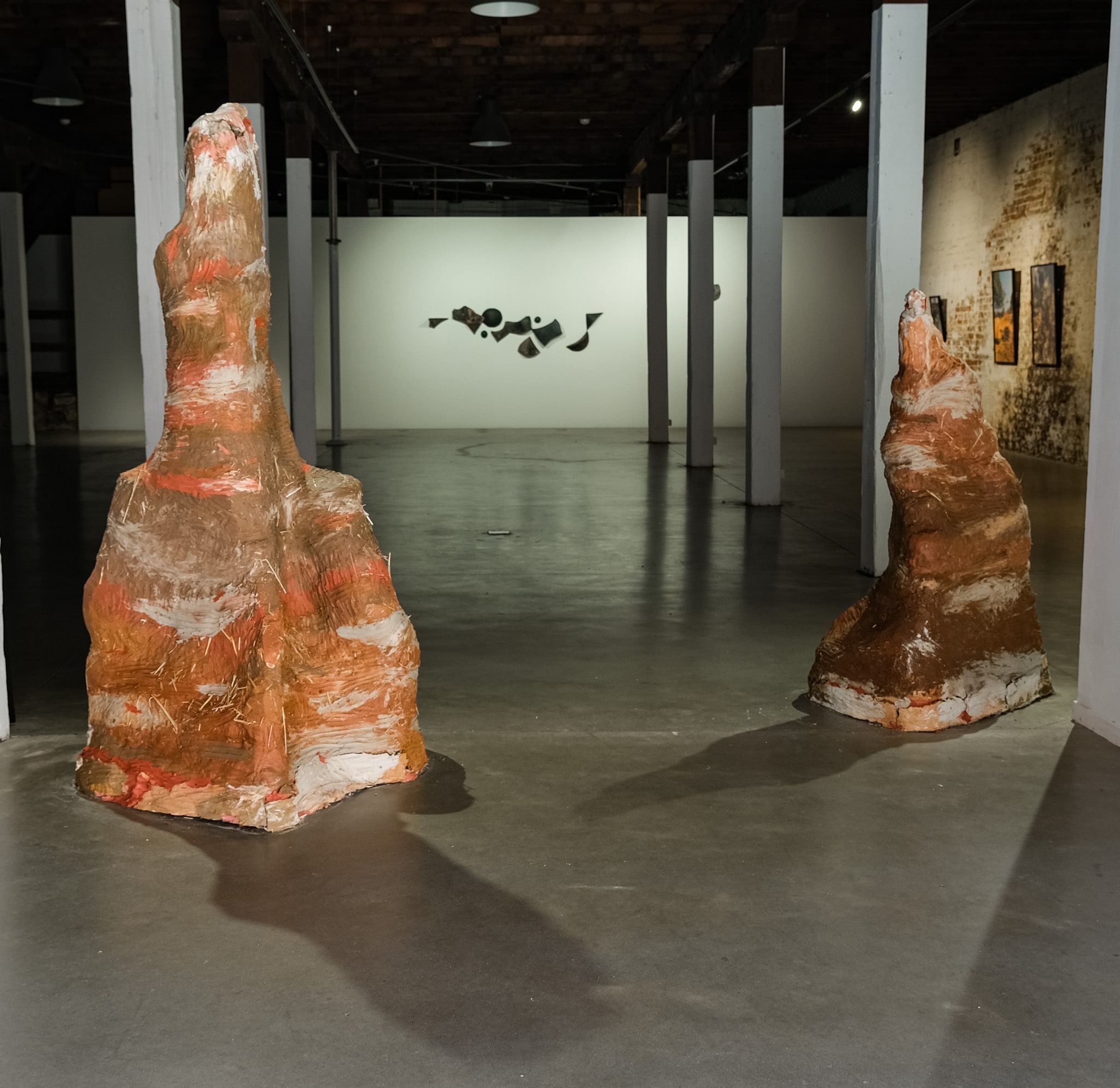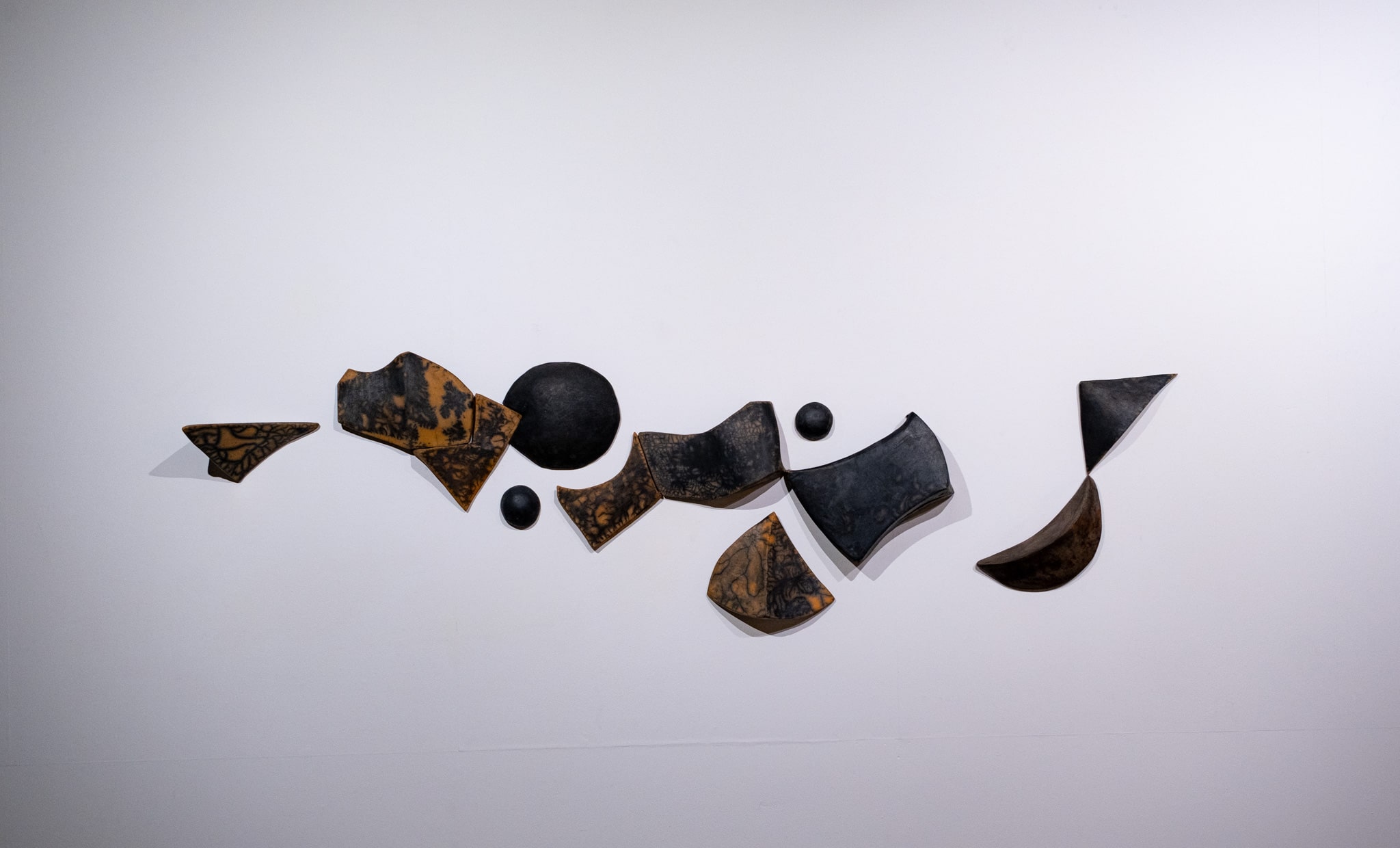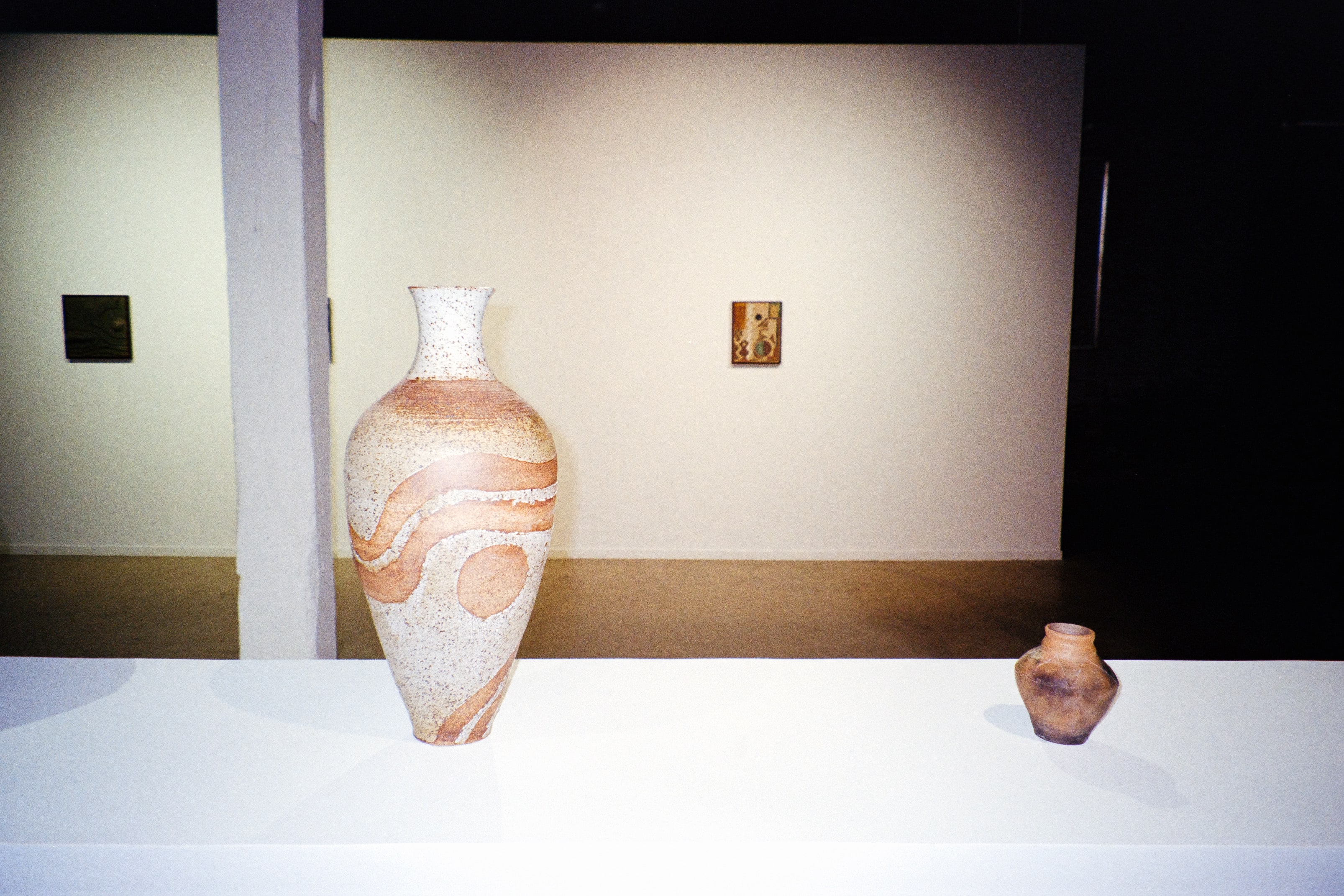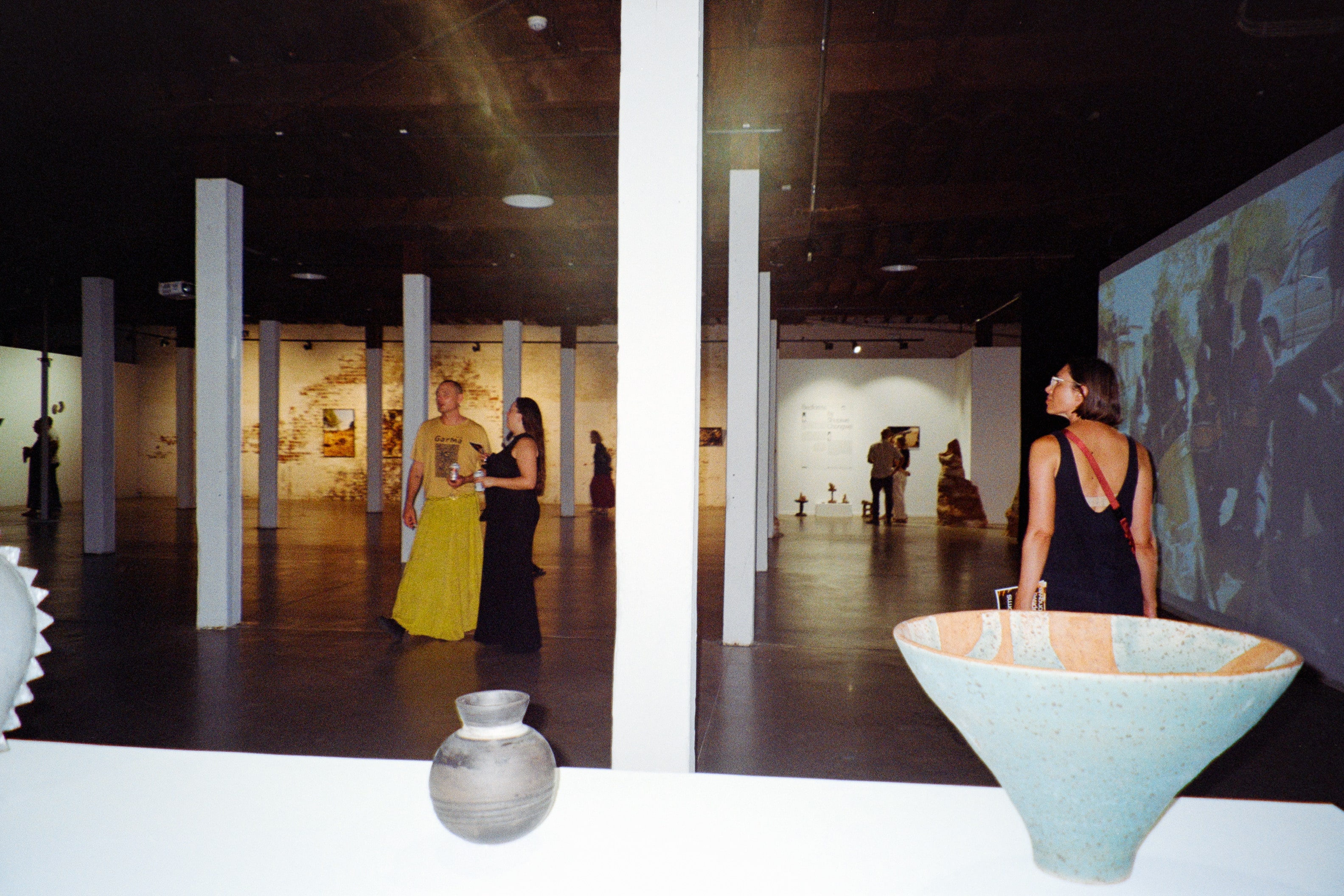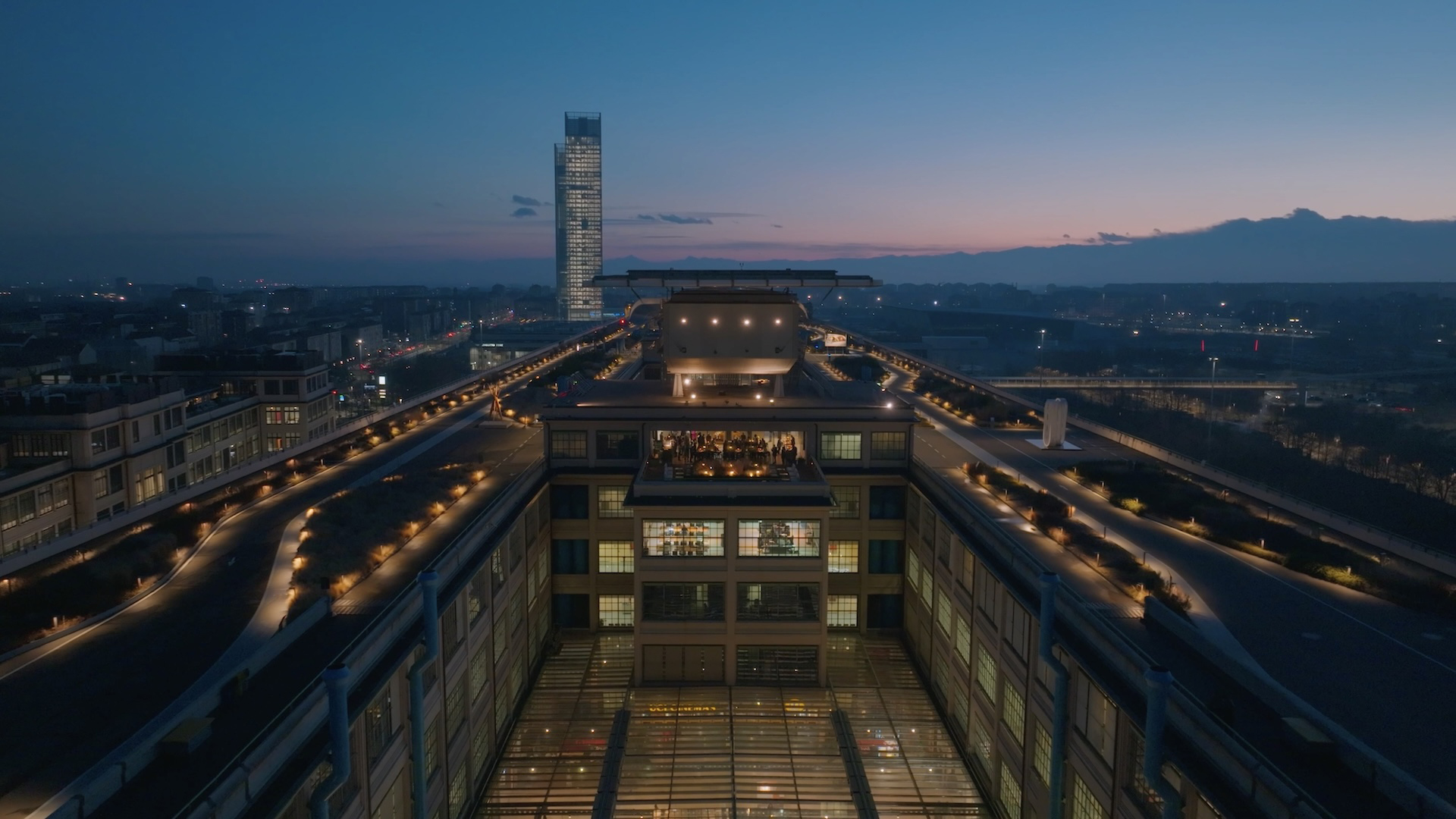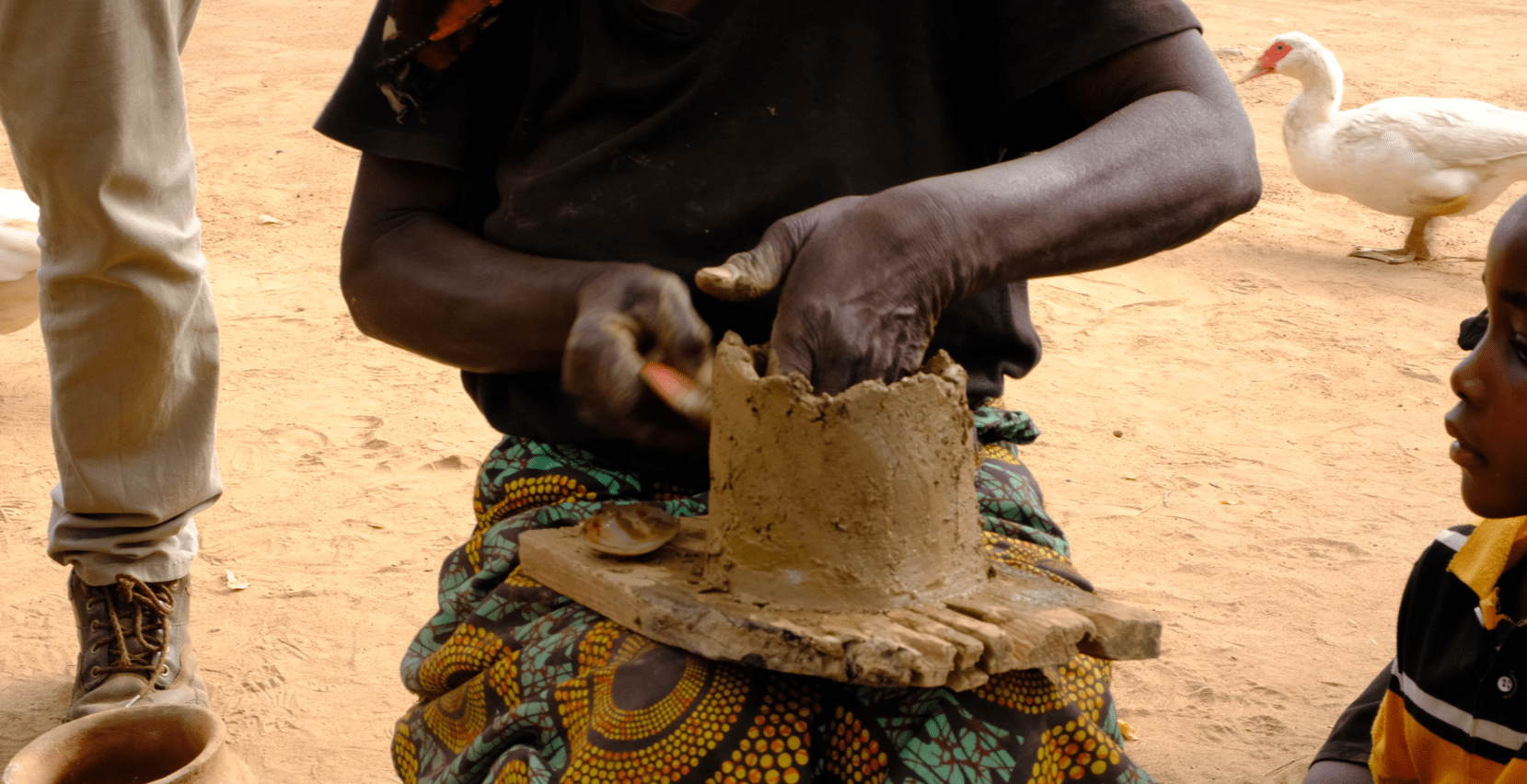
Shupiwe Chongwe’s Bedforms
Contemporary ceramics and ancestral memory: the language of clay in the works of Shupiwe Chongwe, between identity, diaspora, and the African landscape.
“I must be at least thirty percent clay by now. It clings to my skin, ingrains itself under fingernails, attaching to each inward breath. I pound the milky brown rock, dust swirling around me, smoke-like in the sunlight. I’ve learnt recently that the will to make pottery comes to some people whilst they sleep. The older potters tell us that through their dreams, they were compelled to work with clay. I think of being called through my subconscious in such a way, I can’t imagine many stronger connections to the Earth than that.”
In the work of contemporary potter Shupiwe Chongwe, ceramic forms are imbued and moulded with a quiet attentiveness to material and memory or material memory. The practice of material memory-making approaches clay not just as a medium, but as a language. Tactile language that speaks through its plasticity, porosity, and ability to hold and release form. One that pays homage to the Earth and to ancestral dreamscapes. Across Chongwe’s sculptural and functional configurations, forms of and from the Earth inform the birthing of the ceramic offerings. As expressions and translations of the polymorphism seen and felt across natural earth forms, her work is informed by soft rounded curves of undulating hills, the spiked and solid outer rinds of chitunguza (the horned melon); the flow and vastness of large bodies of water and the strewn out speckling and swirling of a clear night’s sky.
 The artist, Shupiwe Chongwe
The artist, Shupiwe Chongwe
As a practitioner of telluric sensibility, Chongwe’s latest exhibition Bedforms borrows its name from a geological feature which can be defined as “a natural structure or pattern that forms on the surface of a sediment bed due to the movement of a fluid, such as water or air, over it.” The term in relation to the work takes on a layered meaning which connects the geological and the personal. Bedforms, in their natural state, are created through the constant push and pull of environmental forces—water, wind, and time—on sediment, shaping the landscape into ripples, dunes, and shifting patterns. Chongwe’s ceramics similarly emerge from an intimate dialogue between material and force, where clay, like sediment, records memory, movement, and transformation. The material memory in the works evokes reflections and questions on migration, identity, and kinship in relation to clay. Identity, like clay, can manifest in states of elasticity—shaped by movement and transformation, by history and the environment. In an intimate reflection on identity and its elasticity and liminality, she shares, “The moist clay colours my skin a deep shade of brown, a shade that I used to long for it to be, an easy explanation for my African name that wouldn’t require awkward responses to unwanted questions.” Here, clay becomes more than a medium; it is a site of negotiation, where belonging is molded and remolded, echoing the fluidity of selfhood.
Chongwe’s practice as a ceramicist and potter in the diaspora is rooted in generational tradition, passed down through her family as both a skill and a form of ancestral knowledge. Her father was her first initiator into this lineage, with his home studio serving as the space where the ritual of working with clay became a vehicle for the transmission of generational knowledge and skill. It was within this space that she first encountered clay not just as a material, but as a carrier of memories.
As a language which speaks of home, her fathers ceramics occupy a space which references both Zambian and Australian aesthetic traditions as places of inspiration in the melding of his expressions. Her great great grandmother, Ambuya Mogodize, was a Chewa stoneware potter who worked with naturally occurring clays sourced from anthills and riverbanks in the Eastern part of Zambia —earthly deposits shaped by time and the elements. Like bedforms. Through the connection between Chongwe and Ambuya Mogodize, the ceramic practice remains tethered to its origins in land-based knowledge, where clay was not merely extracted but gathered with an understanding of its natural rhythms and histories. Her practice engages ancestral techniques that could be seen as rejecting the cold rationality of certain Western production methods—methods often prioritize precision, uniformity, and detachment from the material’s inherent will. Instead, her practice privileges the unique, the erratic, and the intuitive, embracing a state of flow and flux rather than rigidity. Informed by natural rhythms and generational knowledge, her ceramics bear traces of process and gesture, each piece a reflection of the relationship between maker, material, and ancestral memory.
This inheritance of intentional work positions her practice as both a continuation and an expansion of the traditions that shaped her and those who came before her. In a journal reflection she writes, “I think of the other women in my family who have worked the earth before me… Clay seeping into their pores, clinging to hair. Now I do the same, attempting to mirror their movements and bridge a gap that spans decades. …This last month has been an exploration of clay, pottery and family. I’ve listened to my Ambuya share old stories of collecting clay from termite mounds for his grandmother.”
The collection of ceramics presented in Bedforms were posed as sculptural questions of formation and identity. Alongside them, experimental audio visual installations of scenes and perspectives recorded in Zambia in 2024, gave further insight into the artist's journey of mapping her intimate reflections on identity, kinship, and the materiality of movement. Operating as both archive and expression—each piece in the exhibition embodies a repository of personal and collective narratives that emerged, eroded, and reconfigured over time.
 A muTonga potter in the Gwembe Valley digging clay out of a hill.
A muTonga potter in the Gwembe Valley digging clay out of a hill.
While grounded in inherited traditions, Chongwe’s work reflects a dynamic negotiation between past and present, memory and reinvention. The clay she molds is both a material and a metaphor—one that records history but also adapts, reshapes, and absorbs new influences. Just as her ancestors gathered earth from termite mounds and riverbeds, she gathers stories, gestures, and techniques, folding them into her contemporary approach. Her ceramics exist as vessels—not just of function or form, but of lineage, of memory held in material. “Alongside my father, I have watched the skilled hands of village potters moulding clay into sculpture and followed the slow rhythmic thwack of Mrs Mweemba’s flip flops against hard earth as we journeyed to dig clay from a dry riverbed. Throughout this time, there have been many hours collecting, grinding and moulding clay myself, taking time to be still and reflect on the tradition I am continuing.”
Through Bedforms and her larger bodies of work, Chongwe extends an invitation to the viewer to consider the unseen forces that shape us—environmental, cultural, and ancestral. Her ceramics exist as vessels—not just of function or form, but of lineage, memory, and transformation. In her hands, clay is not merely a material but a storyteller, inscribed with histories both inherited and reimagined. To touch clay, in her practice, is to touch time itself—to press one’s hands into the past while shaping the future. The sediment of history does not settle; it continues to shift, ripple, and take new form, just as identity, kinship, and place remain in constant motion. Through her work, Chongwe reminds us that we, too, are shaped by these forces, molded by the landscapes we come from, and the stories we carry forward.
Cover image: The potter's hands. Courtesy of Shupiwe Chongwe
Chona’s current artistic practice is expressed through earth-based alchemy, a process which involves using natural materials such as plants and soils in producing bodies of work which combine ancestral baTonga knowledge and contemporary experimental techniques. Visual poetry is another expression of Chona’s artistic practice. Collages are used as mediums alluding to the intersections of ancestral histories, the present-day and the future of baTonga. Anthropological photographs are often used alongside objects, images and histories of personal accord.Her research and curatorial practice are geared towards the unearthing and exploration of themes of identity, memory, and resistance grounded in a sense of storytelling and healing through alternative mediums. In its entirety Chona’s practice is grounded in the self-composed methodology of Radical Zambezian Reimagination.
